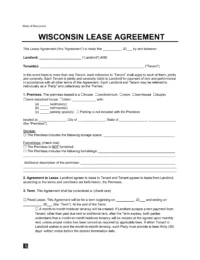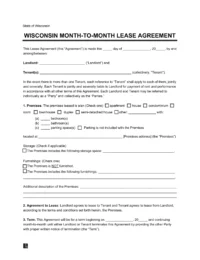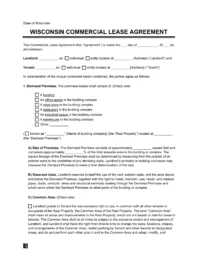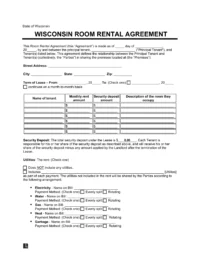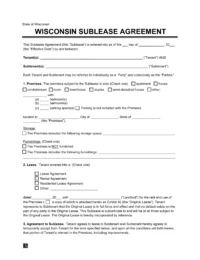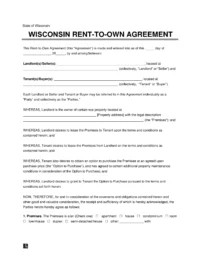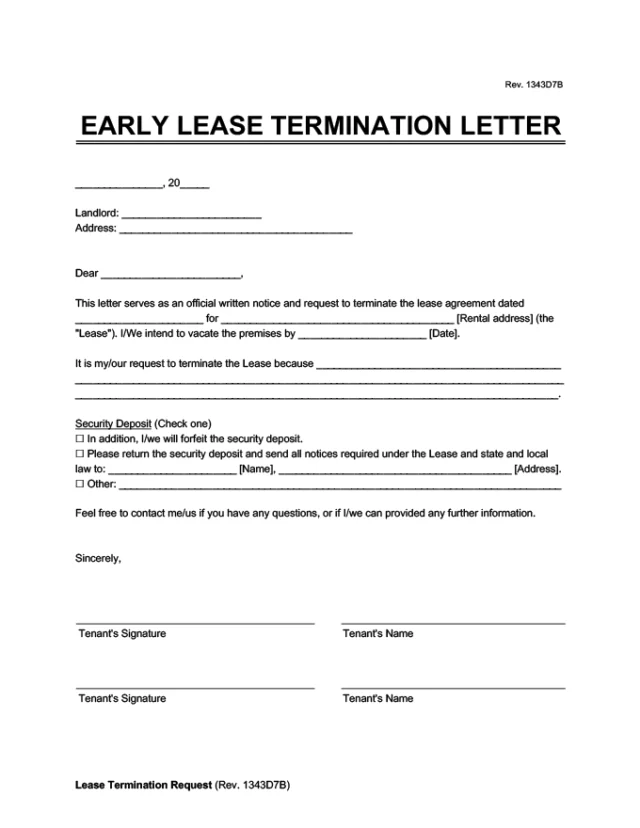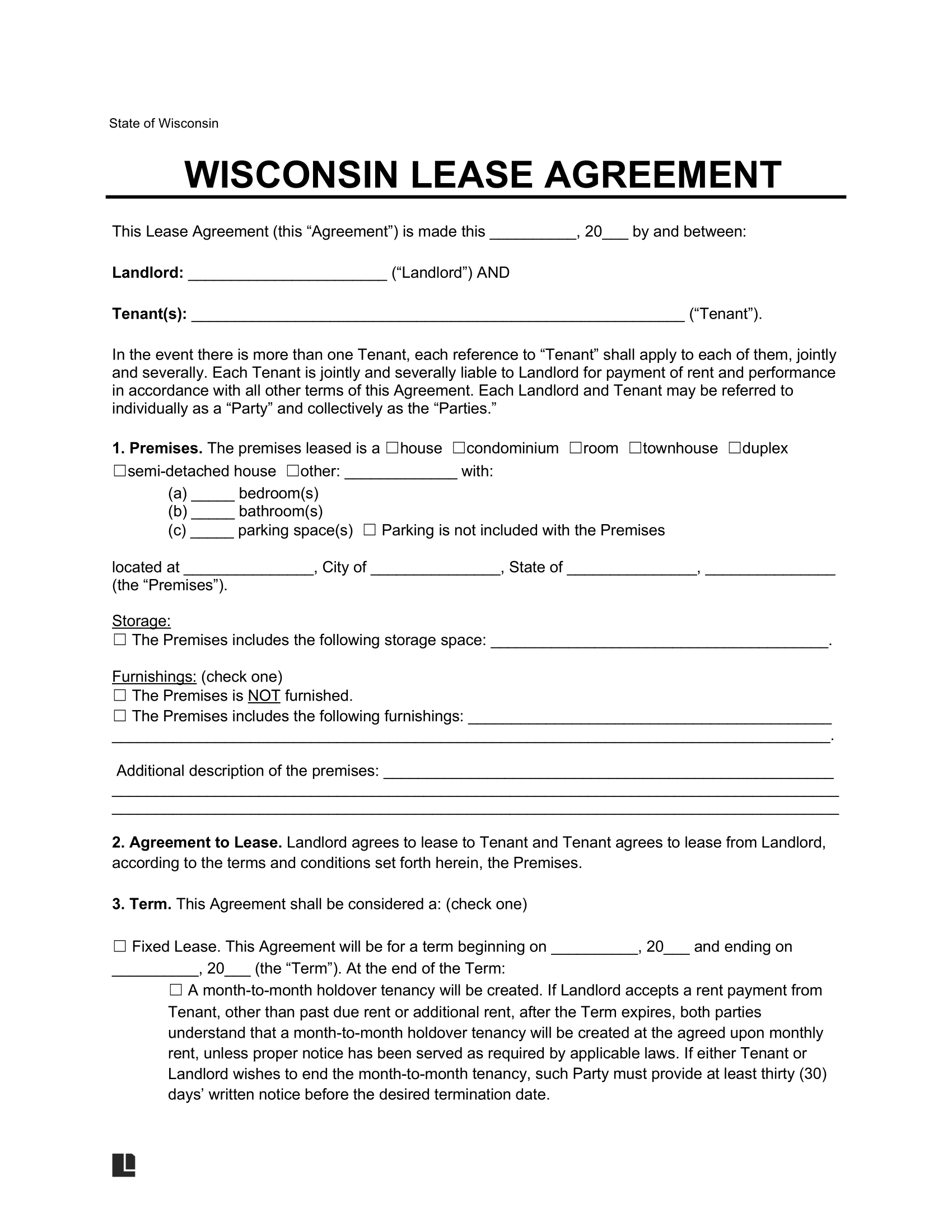What Is a Wisconsin Lease Agreement?
A Wisconsin lease agreement is a contract between the landlord and tenant. It should include information about rent, fees, maintenance, and terminations. The written lease agreement provides protection and clarity for all parties involved.
Legal Templates’s free Wisconsin lease agreement includes state-specific terms. Use our forms to create an effective lease that works for you.
Overview of Wisconsin Landlord-Tenant Laws
Landlord-tenant laws in Wisconsin dictate the terms of the lease. These statutes establish limits and provisions for both landlords and tenants. View the table below for an overview of the most relevant Wisconsin lease laws.
| Topic | Requirements | Statutes |
|---|---|---|
| Rent Control | None | N/A |
| Security Deposits | None | N/A |
| Late Fees | No limits. Must be written in the lease | N/A |
| Grace Periods | None | N/A |
| Landlord Entry | At least 12 hours' notice | WI § ATCP 134.09 |
Wisconsin Lease Agreements- By Type
The type of property and desired duration of the lease may affect the terms of the agreement. Commercial, short-term, and residential leases include specific terms. Consider the following types of Wisconsin lease agreements to create a contract that meets your needs.
Wisconsin Standard Lease Agreement
Constructs a contract for renting out a space
Wisconsin Month-to-Month Rental Agreement
Lets a landlord rent their rental property to a tenant on a monthly basis.
Wisconsin Commercial Lease Agreement
A binding agreement in which a landlord leases a space to a tenant for commercial activities.
Wisconsin Room Rental Agreement
A legal contract between a property owner and a lodger, specifying the conditions for renting a room within the owner's residence.
Wisconsin Sublease Agreement
Allows a tenant to rent the property they're leasing to a subtenant.
Wisconsin Rent-to-Own Lease Agreement
A leasing contract that allows a tenant to rent a property with the possibility of purchasing it in the future.
Rent Payment Regulations in Wisconsin
Wisconsin has no state rent control laws and prohibits counties or local governments from implementing rent control. Additionally, there are no set regulations for late fees or grace periods. All late fees should be communicated in the written lease form. Landlords also hold the right to send a 5-day notice to quit for non-payment as soon as the rent is overdue.
Wisconsin Security Deposit Rules
Security deposits in Wisconsin have no legal limit. The tenant is given seven days after the start of the rental agreement to inspect the premises for any damages or defects before being charged a deposit. They may also request a list of damages charged from the previous tenant’s deposit.
Other security deposit laws require the landlord to provide a deposit receipt and return the deposit within 21 days of the lease end date. If the landlord withholds any portion of the deposit, they must deliver a statement describing the damages and claims.
Landlord Entry and Property Maintenance in Wisconsin
When the landlord needs to enter the property, they must provide at least 12 hours’ notice to enter. The landlord has the right to enter for inspections, repairs, and showings.
The landlord is responsible for maintaining habitable conditions and performing necessary repairs. Additionally, the tenant cannot alter the property without the landlord’s prior consent. Tenants may be entitled to a rent abatement if they are forced to leave the property due to an uninhabitable condition that is not their fault.
Required Wisconsin Lease Disclosures
Disclosures record and communicate important information for landlords and tenants. Federal law and the Wisconsin Civil Code require landlords to provide the following disclosures:
Terminating a Wisconsin Lease Agreement
At the end of the term, either party may terminate the agreement with the procedures outlined in the lease. In Wisconsin, month-to-month tenancies require a 28-day notice of termination. Notice requirements for long-term or year-to-year leases can differ and should be recorded in the lease’s terms.
If the tenant leaves their personal property on the premises, the landlord has the right to dispose of the property as they see fit. Any medical equipment left behind by the tenant must be held by the landlord for seven days before disposal.
Sample Wisconsin Lease Agreement
Legal Templates’s free Wisconsin lease agreement includes state-compliant terms and formatting. Use our customizable forms to create your lease’s terms and download your form in PDF and Word format.



